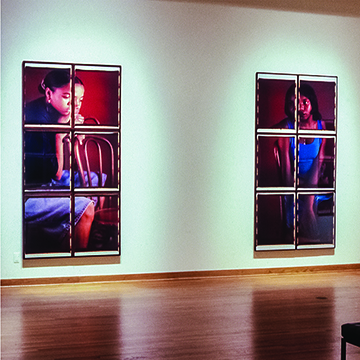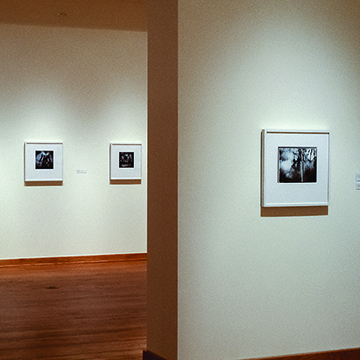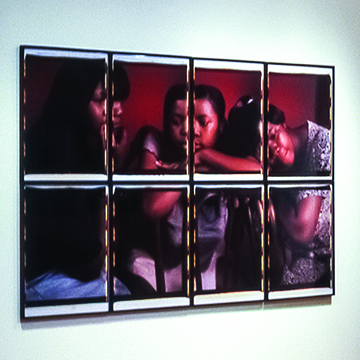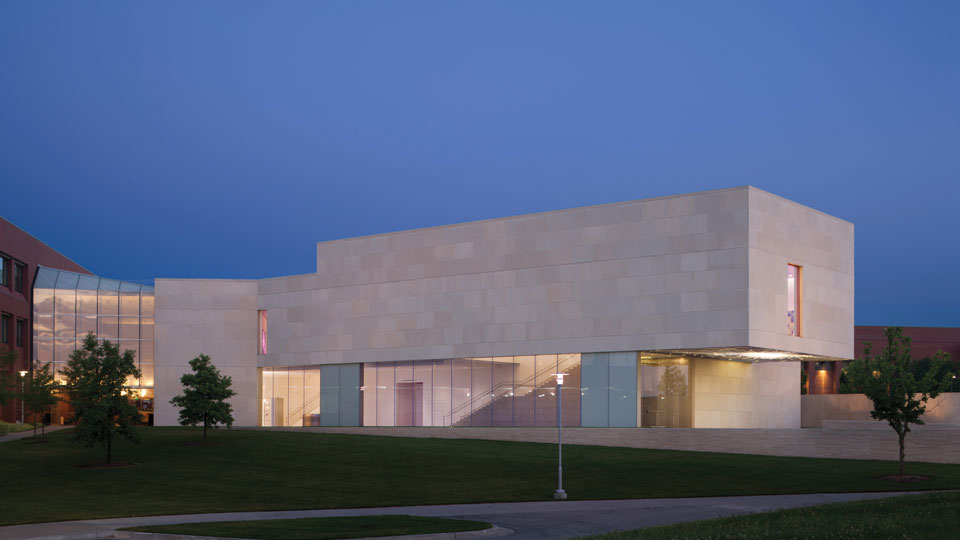Portraits
Dawoud Bey and Wendy Ewald
Two distinctive and remarkable projects by American photographers Dawoud Bey and Wendy Ewald will be featured in this exhibition. Dawoud Bey's 20" x 24" Polaroid studio portraits and the black-and-white works by Wendy Ewald and her young students differ enormously in their styles, their methodologies and their formal properties. Yet, in terms of their content, they have much in common - and, to a considerable extent, spring from related motives and a shared set of ideas and beliefs.
Their work has helped to provoke a crucial, long-overdue discussion that reaches far beyond the boundaries of art discourse into all the observational disciplines and methods of cultural inquiry: sociology, anthropology, historical research and more. In challenging the very concept of photographic seeing as "objective," they've contributed to a significant opening of our eyes. Through their efforts to disseminate the power of photographic representation, they've helped maintain the democratic basis of a medium always threatened by an encroaching elitism. And by insisting on the imperative of revelations and disclosures on both sides of the lens, they've succeeded in keeping themselves as honest as their collaborators.
For most of the 1980s Dawoud Bey worked within the tradition of “street photography” traversing the byways of largely northern cities – Syracuse, Rochester, and New York, NY, and Washington, DC, capturing the urban landscape and the black populations that reside in them. While in the early 1980s space and architecture were in the foreground, eventually the figure returned as the main focus in Bey’s images. By the late 1980s Bey found himself becoming self-conscious about his position as a photographer in often depressed communities. He felt he was taking a lot from his subjects and wanted to find a way to return their generosity. He says, “I began to feel I wanted to have a more sustained contact with the people I was photographing. And I also wanted to be able to make the process more reciprocal: to create some kind of dialogic space within the act of making photographs of people that allowed the subject to both confirm my intentions and also be able to be in possession of this image I was making of them.”
Discarding his standard 35mm equipment, Bey began working with a 4-by-5-inch view camera, setting it up on a tripod – hood and all – in the street. Using Polaroid technology, he was able to give a photograph to each of his subjects instantaneously and still have a usable negative from which to print. From 1980 to 1990 he developed this process and style, resulting in a hybrid between street photography and portraiture – a type of formal outdoor portrait. While Bey’s street portraits are chance encounters, his recent color studio portraits with the 24-by-24-inch Polaroid camera allow multiple photographs to create a single work. In his double portraits, or diptychs, the subject is presented in two very different ways. In one half of the image, the subject’s eyes are averted from the camera; in the other, the subject’s gaze is intently engaged with the act of being photographed with the artist as observer. The sum of these private and public images is a complex and powerful composite likeness. Bey has continued working in this format, expanding the portraits to three-, six-, eight-, and 12-paneled pieces. The majority of Bey’s subjects are teenagers, and through them he captures American youth culture, urban style paraded in clothing, gesture and body language. His subjects use the arena of fashion and their own bodies to construct places and reflections of personal power.
Dawoud Bey was born in 1953 in Queens, New York, and studied at the School of Visual Arts, New York, earned a BA in 1990 from Empire State College, SUNY, Saratoga Springs, NY, and an MFA from Yale University School of Art, New Haven, Connecticut, in 1993. Bey is currently Professor of Art and a Distinguished College Artist at Columbia College Chicago, where he has taught since 1998.
Wendy Ewald’s work with children began in 1969 teaching Naskapi children in Canada and then was refined in 1975 when she moved to a remote area of eastern Kentucky. An accomplished photographer, Ewald began teaching photography to fourth through eighth graders. Her method was to teach the rudiments of photography using basic camera and darkroom techniques, but her emphasis was on subject and potential range of photography – both documentary and fictional. The results of Ewald’s Appalachian project took the notion of children’s photography to new depths and suggested to Ewald that along with her taking own photographs, she should continue her work with children in different countries. Ewald usually works with economically distressed children and tries to vary the cultural and geographical milieu. Her teaching assignments, however, remain the same wherever she goes: self-portraiture, family and community photographs, telling stories through pictures, and photographing dreams and fantasies. Ewald sees herself more as “director” than “teacher,” providing tools for children to use as both a means of expression and as a means of empowerment. For many of the children, this is their first encounter with a camera.
Photography critic A.D. Coleman says about her work, “Ewald’s fine art background and training might incline one to position her among intimists (sic) and autobiographers, but she chooses quite deliberately to place herself in the context of her students’ lives and pictures. Refusing to isolate or single out her work from theirs, Ewald insists that all of these pictures – regardless of whose finger happened to be on the shutter at the moment of image making – be understood as a whole. Her photographic skills are placed at the service of a group effort which is directly about these children’s lives, and obliquely about hers.”
Ultimately, the goal of her work is not to turn the children into photographers. “It’s to teach them to pay attention to the environment around them,” she says, “and to give them a sense of pride in who they are. If they can master photography, they are encouraged to accept other challenges. They begin to face the world with more confidence and to consider more options for their lives.”
Wendy Ewald was born in 1951 in Detroit, and she studied at Massachusetts Institute of Technology and graduated with a BFA from Antioch College in 1974. She is currently senior research associate at the Center for International Studies at Duke University, visiting artist at Amherst College and director of the Literacy through Photography International program and artist in residence at the Duke University Center for International Studies. Her projects have taken her to six different countries and her work has been recognized around the world. She has also published three books: Appalachia: A Self-Portrait (1979), Portraits and Dreams: Photographs and Stories of Children of the Appalachians (1985) and Magic Eyes: Scenes from an Andean Girlhood (1992).
The gallery guide for Portraits includes an essay, “Revelations and Disclosures: The Photographic Projects of Dawoud Bey and Wendy Ewald,” by A.D. Coleman, photography critic, New York Observer.





